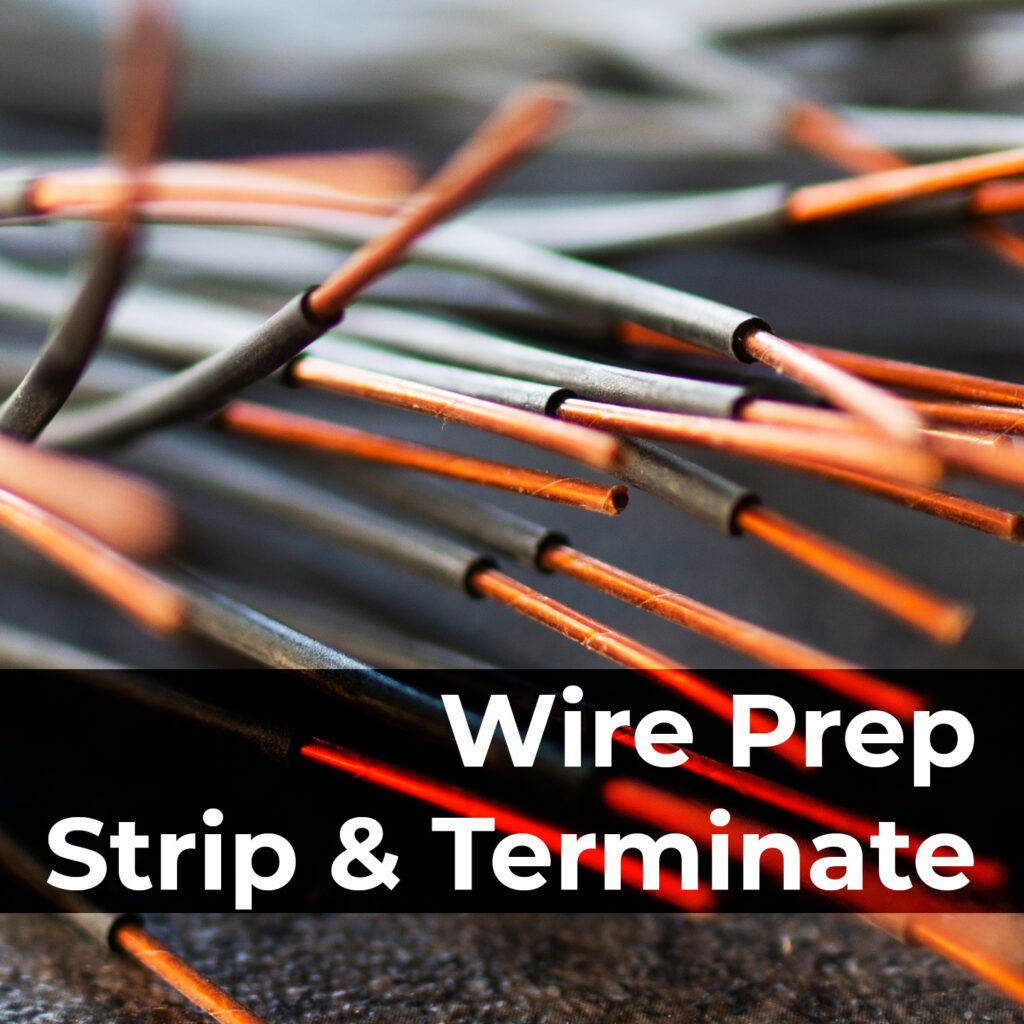PARTS YOURPROJECTS NEED
Having trouble locating obsolete, allocated or hard-to-find electronic components?You need it. We source it. Let us know what you’re looking for and we’ll find it.
Wire prep, strip, and terminate are essential processes in electronics manufacturing companies, particularly in the assembly of electrical harnesses, cables, and wiring systems. These processes involve preparing, stripping insulation from wire ends, and terminating the wires with connectors or terminals.

Here’s a closer look at each step and how they benefits our customers:
Wire preparation involves ensuring that the wires are properly sized, cut to the required length, and have the necessary insulation removed from the ends. This step may also include the tinning of wire ends, which involves applying a thin layer of solder to facilitate better electrical conductivity during termination.Benefits for Customers:
Wire stripping is the process of removing insulation from the wire ends, exposing the conductor for termination. This can be achieved using various methods, including manual stripping tools, automatic stripping machines, or laser wire stripping techniques.Benefits for Customers:
Wire termination involves attaching connectors, terminals, or other devices to the stripped wire ends. This can be achieved through various methods, including crimping, soldering, insulation displacement, or mechanical fastening techniques.Benefits for Customers:
For industrial and government customers, wire prep, strip, and terminate processes provide several benefits, including:
In summary, wire prep, strip, and terminate processes in electronics manufacturing offer efficient, reliable, and standardized wire assemblies, benefiting industrial and government customers by improving quality, reducing costs, and ensuring compliance with industry standards.